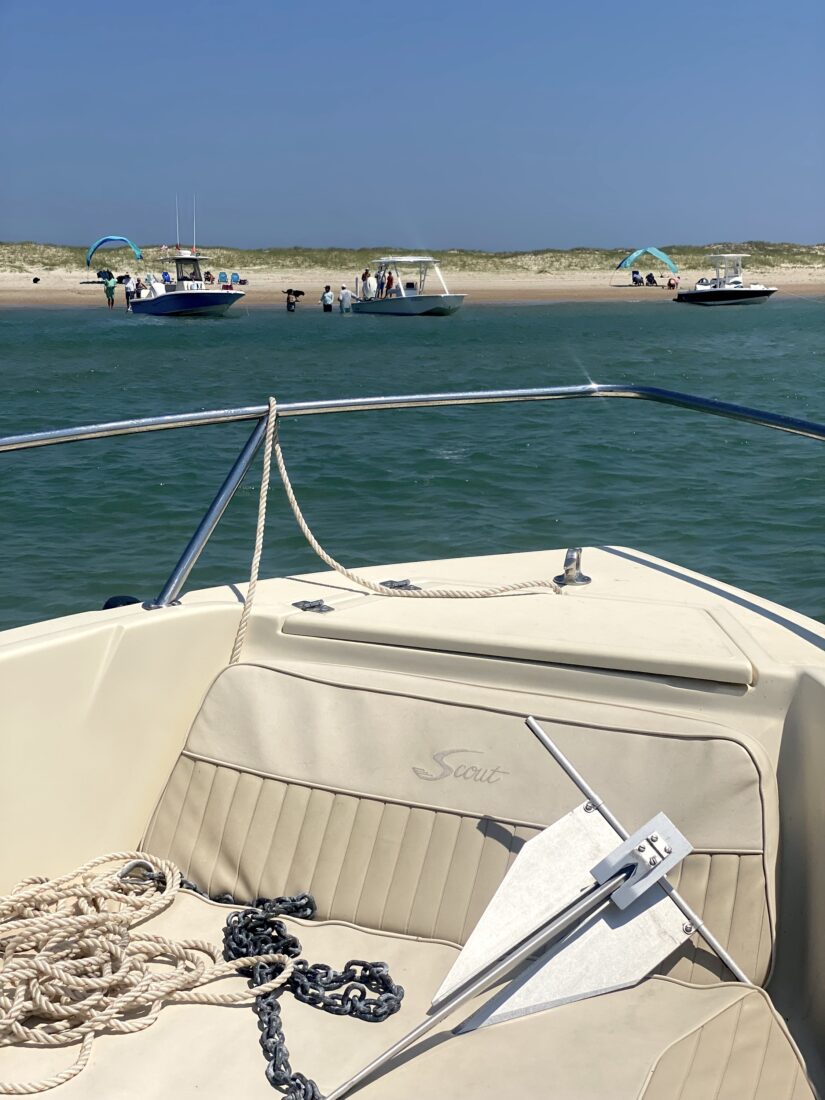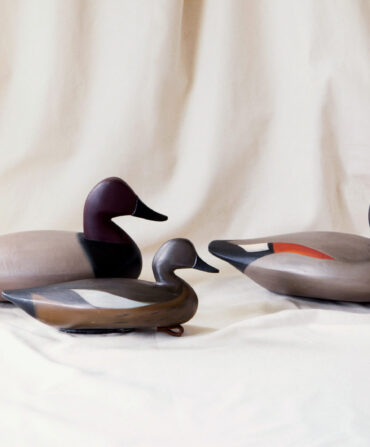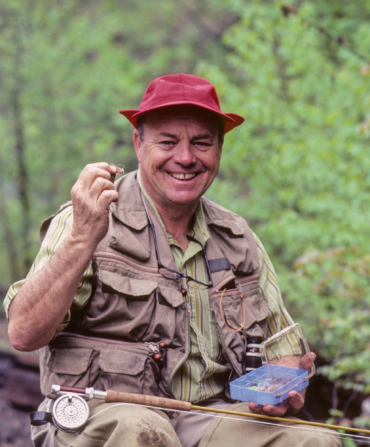When it comes to heart-rate-raising boat skills, anchoring off a crowded sandbar or stretch of barrier island beach ranks barely behind backing a boat down a crowded ramp. You ease up to a favorite slice of sand and there they are: All those people. All those acres of fiberglass. All that potential for looking very incompetent.

You could anchor with your bow facing shore, but it’s far better to anchor with the stern to the shore. That will help ensure an easier time getting off and on the boat, as the stern will be in shallower water than the bow. And it allows the bow to ride up and over chop and boat wakes while you’re anchored.
Lately, I’ve tried a slight twist on the standard way of anchoring at a sandbar, and while I don’t have it down pat, and my first try was a bit of a mess because I failed to take into account a strong tide, I’m getting the hang of it. The usual method involves a companion at the bow who drops the bow anchor as you back down to the beach to set the stern anchor. This twist is to bring the bow anchor back to stern before approaching the beach, so it’s easier to get it overboard while piloting the boat. It’s a neat little trick if you’re boating solo, but also works well even when you have companions aboard to help.
First, a few definitions. “Scope” refers to the length of the anchor line between the cleat and the water bottom. “Rode” is the nautical term for anchor line. A common recommendation is to use a scope of 7:1, meaning for every foot of water depth, you’ll need seven feet of rode. If you’re anchoring in four feet of water, plan on twenty-eight feet of rode.
With that in mind, here’s the step-by-step:
As you approach the sandbar or barrier island beach, observe how others are anchored. You can tell how tide or wind is affecting the boats by their position relative to their anchor lines. Take the bow anchor out of the anchor well and walk it back to the port corner at the stern. Prep the stern anchor by stacking the anchor and line in the starboard corner of the stern. Trim your motor up a bit, then proceed slowly toward the shoreline.
When you get to the spot where you want the bow anchor to be, drop it off the stern and let the line run just outside the port gunwale as you idle closer to shore. Keep the 7:1 rule in mind, and make sure the line stays clear of the propeller.
As you approach about two boat-lengths from where you want the stern anchor, begin a 180-degree spin to port, which moves the motor away from the bow anchor line. At the completion of the spin, drop the stern anchor at a slight angle into the tide, and idle a few feet toward the bow anchor. Cleat off the bow anchor line, then back down gently to set it. Cleat off the stern anchor. You can then adjust the stern anchor line by walking it toward the beach.
You’ll need to keep an eye on the tide to make sure your boat floats with enough water to keep it from hitting bottom—which is why you want to have plenty of rode out at the bow. When you need to move to deeper water, just loosen the stern line, take in some bow line, and cleat the lines off. Then go back to your beach blanket and beverage of choice.
Follow T. Edward Nickens on Instagram @enickens and find more Wild South columns here.








